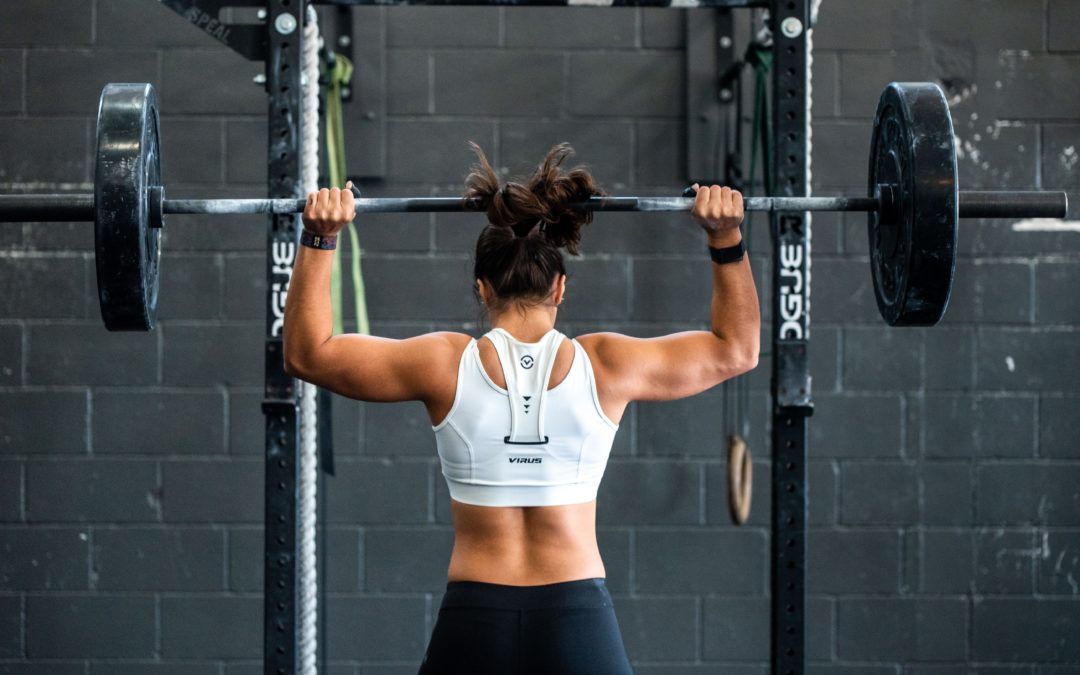It’s no secret that medical professionals recommend regular exercise to help with menstrual cramps, and weight training is becoming increasingly popular among women as an effective method to control weight and strengthen bones. While some women feel energised during menstruation, others feel more tired, but does the phase of our cycle actually affect how strong we are, and should we be working out differently at different times of the month?
The menstrual cycle is regulated by changes in four hormones; oestrogen, progesterone, follicle stimulating hormone (FSH), and lutenizing hormone (LH). About one week before menstruation, both oestrogen and progesterone levels in the body are at their highest, whereas FSH and LH tend to peak at mid-cycle, around ovulation. Scientists are unclear whether women’s muscle strength varies at different phases of the menstrual cycle. Some researchers report that women are stronger during ovulation, suggesting that FSH and LH may be involved, yet others failed to find any differences in strength across the menstrual cycle.
However, all these studies used different measures of strength, and only considered the maximum weight women could lift, rather than the more recent measure of velocity to indicate muscle strength and power – i.e. how fast different weights can be lifted. To address this confusion, a study was recently performed by Spanish researchers, to investigate the effect of the menstrual cycle using more recent measures of muscle performance.
Thirteen female triathletes, with an average age of 31 years, volunteered to take part in the study. All the volunteers had regular menstrual cycles, were not using hormonal contraceptives, and were familiar with the half-squat resistance-training exercise.
The women were asked to perform half-squats with increasing weight, up to 80% of their maximum load, at three different phases of their menstrual cycle. All trials were performed in a laboratory setting at the same time of day, less than three hours after a meal. The phases of the menstrual cycle were assessed by combining information from a period tracker application, the measurement of body temperature and mass, and the levels of LH in the urine.
The study found that neither force, velocity, nor power of muscle strength in the volunteers was affected by the phase of the menstrual cycle, at least not with any statistical significance.
This is great news for women – it means that menstruation doesn’t make us physically weaker at lifting weights in the gym or just using our strength for daily activities.
If you are weight training in the gym, it’s worth noting that this study doesn’t rule out the effect of the menstrual cycle on gaining muscle mass. In fact, it seems that the balance of hormones during ovulation increase muscle protein synthesis, so although the muscles have the same strength and power throughout the cycle, we’re more likely to build up our muscles when we train mid-cycle.
Regular strength training has excellent benefits for weight control, strengthens bones – reducing our risk of osteoporosis in later life, and is even reported to ease menstrual cramps, so there’s no reason to avoid it at particular times of the month.
Just remember to increase exercise levels gradually, listen to your body in terms of how hard you work out and start charting using Emgoddess to know where you are in your cycle.
References: Romero-Moraleda B et al. The influence of the Menstrual Cycle on Muscle Strength and Power Performance. Journal of Human Kinetics 2019;68:123—133. https://www.independent.co.uk/life-style/health-and-families/why-women-should-lift-weights-6- reasons-exercise-fitness-confidence-strength-fat-loss-a7829436.html https://www.womenshealth.gov/getting-active/physical-activity-menstrual-cycle

